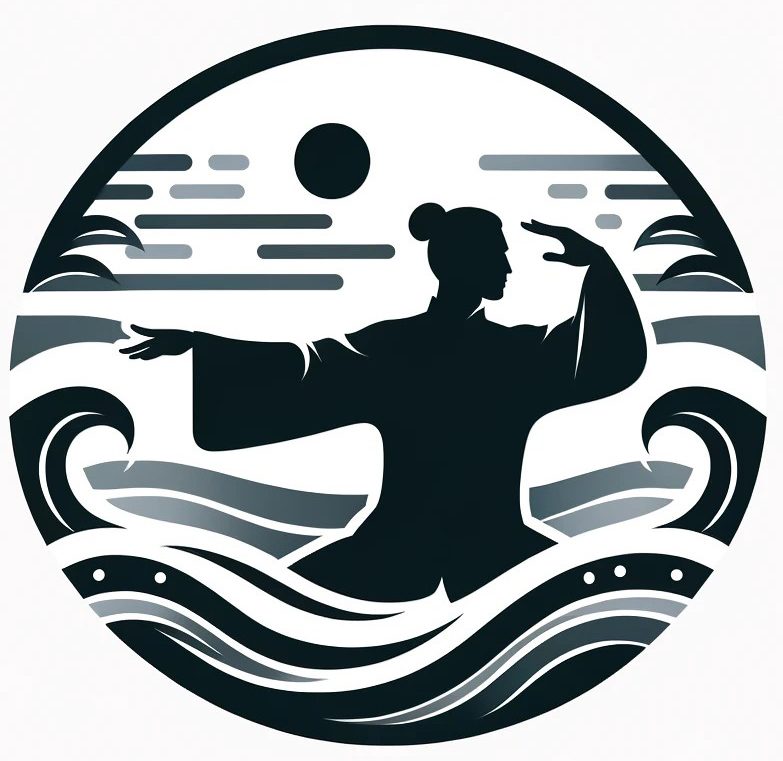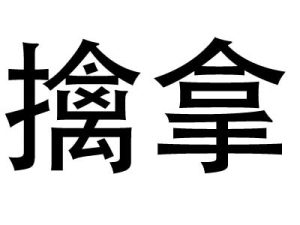Zhaobao Tai Chi refers to a style of Tai Chi closely tied to Chen-style forms. But what does “Zhaobao” means? Zhaobao is the name of a street in Wen County, located near the Meng Feng intersection. For those unfamiliar, locals refer to it as “Zhaobao Jie,” or Zhaobao Street. It’s only about a 3-4 minute ride from Chen Village, making it incredibly close to the birthplace of Chen-style Tai Chi.
Zhaobao Street is shaped like a “Y,” with one branch leading toward Jiaozuo City and the other toward Chen Village. The long tail stretches back to the Wen County center. In the early 1980s, Zhaobao Street was relatively small, entired street with buildings about 200-300 meter long, and with a large factory at the center of the “Y,” flanked by a mini-hospital, a small theater, and local government offices. Over time, the theater are closed down, the area developed into a bustling hub. Shops began opening up, and vegetable and meat markets became regular fixtures. On trade days, (Ji Hui) , every months there one or two days is trade days, all the small business gather around the street to sell, you’d find tricycle cars lining on two side of the street, offering everything from clothes and shoes to household essentials.
Unlike the globally recognized Yang or Wu styles, Zhaobao Tai Chi is lesser-known but often regarded as a variant of Chen-style Tai Chi. Its forms and techniques closely resemble those of Chen style, earning it the nickname “another name for Chen-style forms.” Despite its quieter reputation, Zhaobao Tai Chi carries its own rich history and unique connection to the origins of Tai Chi.
The Origins and Evolution of Zhaobao Frame
The Zhaobao Frame originated with Chen Jingbo and flourished under Chen Qingping. It began when Chen Jingbo’s family relocated from Chenjiagou to Zhaobao Village. Chen Jingbo’s relatives, such as his uncles and cousins like Chen Shixin (noted in the Chenjiagou family genealogy as a “martial arts hero”) and Chen Shixin’s son, Chen Daxing, were all recognized martial artists. This indicates that Chen Jingbo’s immediate family had a high concentration of skilled martial practitioners. Later, Chen Qingping’s family (who had previously moved from Chenjiagou to Wanggedang and then to Zhaobao Village) joined him. Together, Chen Jingbo and Chen Qingping planted the roots of Chen-style Taijiquan in Zhaobao Village, several kilometers from Chenjiagou, which eventually evolved into what is now called the Zhaobao Frame (or Zhaobao Street Frame). However, the two Chenjiagou masters have often been overshadowed in fabricated versions of the Zhaobao Taijiquan lineage.
Key Figures and Neglected Contributions
Chen Jingbo and Chen Qingping were undeniably pivotal figures in the creation and transmission of the Zhaobao Frame. Yet, due to their association with the Chenjiagou lineage, their contributions and descendants have been overlooked or marginalized. For instance, while Zhaobao practitioners claim to honor historical figures like Jiang Fa, they neglect the legacy of Chen Jingbo and Chen Qingping, whose influence is much closer and more direct. This disregard raises the question: who, in this narrative, is truly betraying their teachers and ancestors?
Questioning the Validity of Du Yuanhua’s Claims
Historical research on martial arts requires rigor, balancing written records with oral traditions. The modern claims tying Zhaobao Taijiquan to Wudang are heavily based on materials from Du Yuanhua, a Qinyang native who documented his version of events in 1935. Du’s narrative misrepresented figures like Wang Linzhen by renaming him Wang Zongyue and included fabricated entries, such as Wang Baiqing, from a debunked text called The Secret Techniques of Taijiquan. These efforts aimed to construct a lineage distinct from Chenjiagou, but no historical records or oral traditions substantiate these claims.
Notably, Zhaobao Village itself has no evidence to support Du Yuanhua’s version of the lineage. Even in Wen County, no primary sources or oral accounts validate his assertions.
Chen Qingping’s Influence on Wu-Style Taijiquan
According to the Wu-style Taijiquan lineage, created by Chen Qingping’s disciple Wu Yuxiang, there is no mention of Zhaobao Taijiquan. If the Zhaobao lineage were authentic, it should logically appear in Wu Yuxiang’s accounts. Instead, Wu-style records emphasize the Chenjiagou origins of Taijiquan, stating: “The profound wisdom of Chenjiagou is passed down through few people in each generation.” This directly dismisses the idea of an independent Zhaobao lineage.
Furthermore, the Sun-style Taijiquan, which evolved from Wu-style, also traces its roots to Chen Qingping and Chenjiagou, further corroborating this connection.
The Views of Sun Lutang’s Disciple, Gu Ruzhang
Gu Ruzhang, a disciple of Sun Lutang, noted that Chen Qingping was a direct inheritor of Chenjiagou Taijiquan. He clarified that direct inheritance referred to martial arts lineage rather than solely bloodline. Sun Lutang himself, despite being a Wu-style practitioner, sought to study in Chenjiagou during his youth but was turned away due to the village’s secrecy and conservatism.
Historically, Chenjiagou hosted numerous martial artists from various schools who came to learn. Some became founders of their own styles, while countless others remain undocumented. However, records of martial artists traveling to Zhaobao Village to study are notably absent.
Taijiquan’s Secretive Origins
In ancient times, Chen-style Taijiquan was a closely guarded family tradition, shrouded in secrecy due to societal restrictions on martial arts. Even the name “Taijiquan” was unknown outside the family, and outsiders referred to it with descriptive names like “Soft Hammer,” “Cotton Boxing,” or “Gentle Fist.” Learning Taijiquan as an outsider was nearly impossible—akin to reaching for the stars.
Yang Luchan (Yang Lu-chan), for instance, only learned Taijiquan because he was adopted into the Chen family. Claims that Wu Yuxiang paid for access to Chen-style techniques are baseless, as wealth alone could not buy such knowledge. Similarly, the idea that Yang Luchan stole the techniques is a fictional invention of novelists.
However, when Chen Jingbo’s family moved to Zhaobao Village, his progressive mindset allowed for limited external teaching of the once-secret art. Zhang Zongyu, a prominent figure in Zhaobao Village, was among Chen Jingbo’s many disciples during this transformative era.
Untangling the Legacy of Xing Xihuai
Available evidence suggests that Xing Xihuai, another significant figure in Zhaobao Taijiquan, also studied under Chen Jingbo, like Zhang Zongyu. While this remains speculative, it’s difficult to imagine Xing learning the Chen family’s secret techniques anywhere else. The current information about Xing Xihuai’s family is inconsistent and incomplete. We can only hope that future revelations from Xing’s descendants will provide clarity, ensuring that this key figure’s contributions are accurately documented.
Conclusion: Revisiting Zhaobao Frame’s Origins
Attempts to tie Zhaobao Frame to Wudang have muddled its true origins, often neglecting the undeniable contributions of Chen Jingbo and Chen Qingping. The historical and cultural ties between Zhaobao Village and Chenjiagou remain strong, yet modern reinterpretations have sought to distance Zhaobao Frame from its Chen-style roots. A careful reevaluation of historical records and family lineages is essential to preserving the legacy of these key figures and restoring the true narrative of Zhaobao Frame’s development.


